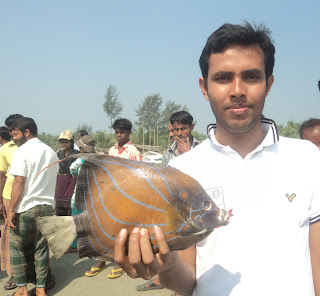 |
| Painted lady |
The Cynthia group of colourful butterflies, commonly called painted ladies, comprises a subgenus of the genus Vanessa in the Family Nymphalidae. They are well known throughout most of the world.
It is a large butterfly (wing span 5–9 cm (2.0–3.5 in)) identified by the
black and white corners of its mainly deep orange, black-spotted wings.
It has five white spots in the black forewing tips and while the orange
areas may be pale here and there, there are no clean white dots in them.
The hindwings carry four small submarginal eyespots on dorsal and
ventral sides. In Europe it migrates annually between North Africa, including Morocco, and northern Europe, using a sun compass for orientation. Its also found in Dhaka, Bangladesh. Painted lady on lantana camara plant. Lantana camara is a necter plant.









